“The customer is always right” sounds good in theory. Putting buyers’ needs first generates trust, loyalty and repeat sales.
However, taking the idea literally can do more harm than good. It fuels unrealistic expectations and strains support teams, hurting your company in the long run.
This guide explores who said “the customer is always right” first, why it still matters for customer satisfaction and how you can balance excellent service with team morale and healthy profits.
Key takeaways for the “customer is always right”
The phrase “the customer is always right” began as a 1900s retail slogan emphasizing the importance of listening to buyers. It was never meant to be taken literally in every circumstance.
Following the phrase unthinkingly can damage staff morale, increase costs and reward unreasonable behavior, so your team needs clear boundaries.
The idea still has value when used as a reminder to prioritize the customer experience, but it should be tempered with fair policies that protect your team and profit margins.
A CRM like Pipedrive helps strike that balance by capturing feedback, spotting complaint patterns and more effectively managing customer expectations. Start your free 14-day trial to see how Pipedrive supports healthy customer service.
The origin of “the customer is always right”
The history of “the customer is always right” is murky. The quote has a few possible originators.
The most cited is Harry Gordon Selfridge, who founded Selfridge’s department store in the early 20th century. He used it as a training and advertising slogan to ensure staff took customer complaints seriously and shoppers felt valued.
It’s thought that US business owners Marshall Field and John Wanamaker had similar slogans around the same time, potentially before Harry Selfridge.
Swiss hotelier Cesar Ritz (of the Ritz Carlton) also championed a French version to capture luxury hospitality: “Le client n’a jamais tort” translates to “The customer is never wrong”.
Modern claims that the full quote was “The customer is always right in matters of taste” are unproven, although these extra words give the meaning an interesting twist.
Whatever the true origins, the catchy phrase has stuck for over a century – for better or worse.
Note: The “customer is always right” quote has many spin-offs, like “no questions asked” return policies and “satisfaction guaranteed”. They sound different, but all aim to make customers confident about buying products.
Is the customer always right? Why you shouldn’t take the adage literally
Treating “the customer is always right” full quote as an unbreakable rule can backfire.
Some buyers have unrealistic expectations, while others exploit lenient policies. Over time, giving in to every customer’s request for a discount or freebie erodes margins and wears teams down.
A Deakin University study found that unreasonable customer demands lower job satisfaction and emotionally exhaust employees. Stressed teams are less likely to deliver excellent service, and poor service affects customer retention.
Both business-to-business (B2B) and business-to-consumer (B2C) salespeople face unreasonable demands.
For example, software development clients often push for constant “small” scope changes without adjusting budgets or timelines. This slow drain on resources hurts profitability.
In hospitality, UK chef Andrew Sheridan told the Guardian about one diner who expected him to pay a driving fine they’d picked up traveling to his restaurant and another who wanted a free meal because a structural pillar had “blocked” her view.
These are strong cases for letting some unhappy customers stay unhappy.
Note: “Caveat emptor” is Latin for “let the buyer beware”. It means customers are responsible for making informed decisions, and not all accountability lies with the seller. The modern equivalent, “buyer beware”, still comes up in sales agreements, especially for real estate deals.
The small case for “the customer is always right”
The customer isn’t always right. However, the phrase’s core principle is valuable as it promotes customer-centricity.
A 2024 Qualtrics study found that customers with excellent customer service experiences (i.e., five-star) were around three times more likely to recommend and trust a brand than those who rated their experience 1–2 stars. They were also twice as likely to buy more.

In other words, you don’t have to agree with every buyer every time, but seeing things from their perspective whenever possible is a reliable way of driving customer loyalty.
For example, a customer who receives the wrong product is bound to be frustrated. Even if you don’t yet understand how the error occurred, own the mistake and respond with an apology and goodwill gesture to regain their trust.
When to stand your ground with customers (and how to do it well)
Even the most customer-centric companies have limits.
Standing your ground doesn’t mean ignoring complaints or being inflexible. It’s knowing when a request crosses the line and handling it fairly and professionally.
Here are some situations that always call for a firm “no”:
Issue type | What it looks like |
Unreasonable demands | The customer requests free products, heavy discounts or services outside your agreed scope without extra payment |
Abusive behavior | The customer is aggressive or threatening toward your team and may use discriminatory language in the process |
Policy abuse | The customer tries to exploit your policies, returning used products for a full refund or creating multiple accounts to get new customer perks |
Repeated late payments | The customer regularly misses payment deadlines without valid reasons, forcing you to chase sales invoices or take legal action |
Fraudulent activity | The customer provides false information or attempts to scam your business (e.g., with stolen payment details) |
When these situations happen, keep the customer experience constructive. Otherwise, you could start collecting negative reviews that affect your reputation.
CX expert Michael Podolski offered this advice in a Forbes article:
Here’s how to handle those tough customer interactions:
Listen first, then make a plan. Let the customer fully explain their concern before you respond. They may not articulate their issue well enough at first.
Be clear and consistent. Explain why you can’t meet your customer’s request. Reference a company policy or contractual terms, or simply point out that if you bend the rules for one person, you’ll have to do the same for everyone.
Suggest alternatives. Offer solutions that meet the customer’s needs, like a compromise. It could be a partial refund, store credit or payment deadline extension.
Most importantly, ensure internal policies empower team members to say “no” when necessary, without fear of pushback. Communicate your guidelines via regular training and be clear that you’ll back your team up if they follow them.
Doing what you can for reasonable customers while setting boundaries protects margins and team morale, keeping your business healthy. It also ensures that when you or your reps say “yes”, it’s for the right reasons.
Note: In a survey of 4,000 US and UK consumers, 68% said retailers make it easy to abuse flexible return policies. Over half (58%) said companies make it easy to take advantage of promotions by opening multiple accounts.
6 essential tools and tactics for healthy customer service
Balancing great customer experiences and clear boundaries is much easier with the right systems and processes.
The following tools and tactics make it simple for your team to consistently deliver excellent service to reasonable customers and handle unreasonable situations.
1. A user-friendly CRM system
Centralize every customer preference, interaction and order in a customer relationship management (CRM) system to give your team the full context.
For example, a loyal customer’s long purchase history might persuade a support agent to approve an exception to the returns policy. It’s a reasonable bending of the rules to protect a valuable relationship.
In contrast, seeing that a new customer wants a refund six months after a one-time, minor purchase gives the agent grounds to say “no” confidently.
Pipedrive allows you to log every touchpoint, tag high-value accounts and use deal histories to guide fair, consistent decisions. Here’s the software’s deal detail view:
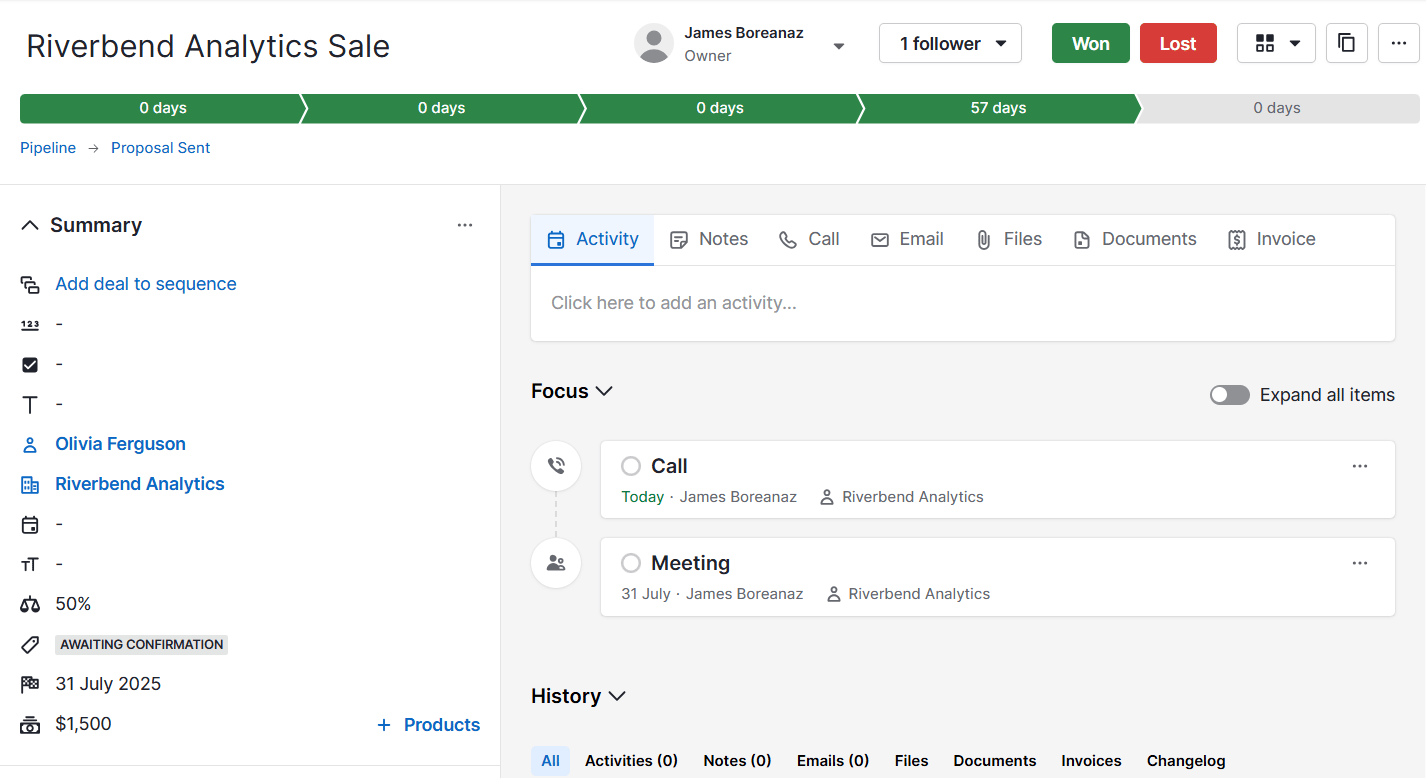
Making this data accessible to every customer-facing team ensures everyone can make decisions based on the same accurate information.
Download our Customer Journey Map Template
2. A detailed knowledge base and FAQs content
Help customers solve everyday problems on their own with a well-maintained knowledge base. It’ll reduce misunderstandings, making people less likely to make unreasonable demands.
Take Miro’s simple Help Center, for example. Users can search for answers to specific problems, choose a category or explore trending topics:
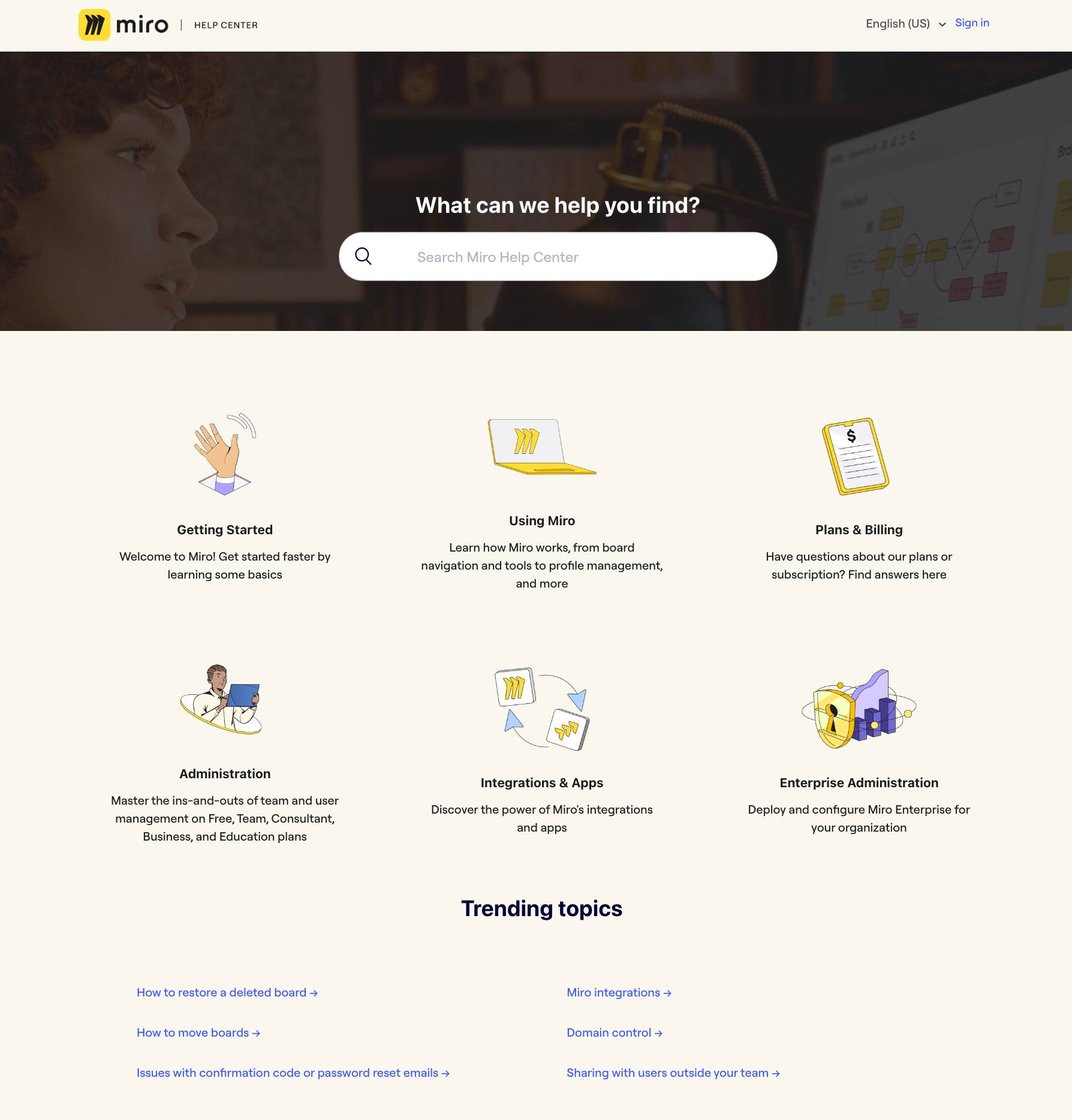
Further down the page is a frequently-asked questions (FAQs) section covering common queries on account management, billing, functionality and pricing:
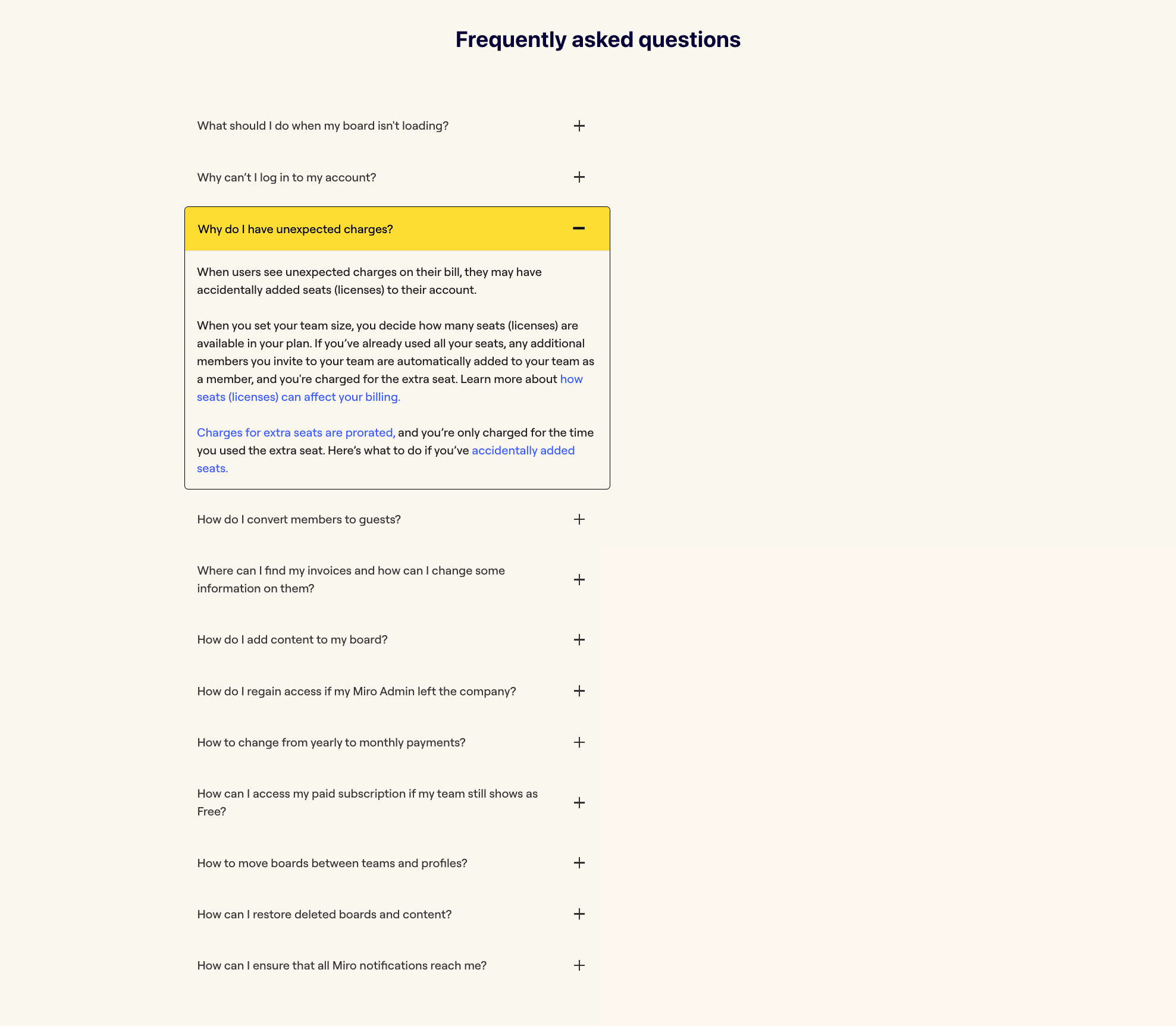
If Miro users see why they have unexpected charges (one of the earlier FAQs), they’re much less likely to demand a refund or discount. Even better, if the content helps them avoid those charges entirely, the customer experience improves from the start.
Every answer users get by themselves is another call your customer support team doesn’t have to take.
Let sales conversations and help desk data guide what you include in your FAQs. For instance, if support staff say they spend the most time providing basic billing information, put these queries near the top of your page.
3. Reliable customer feedback loops
Collect customer feedback regularly to find and fix problems before they escalate.
Post-purchase surveys, social media monitoring and online review tracking all feed valuable insights into your customer service strategy.
CSAT surveys help too. Send them at key points in the buyer journey to uncover issues hiding behind happy customers. You can create these in tools like Nicereply and even distribute them through Gmail:
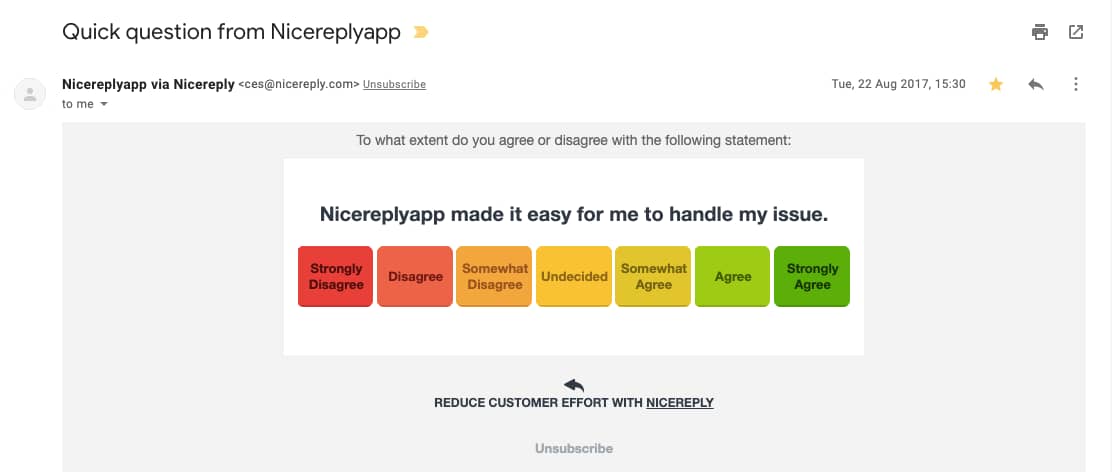
Sales demos, orders, returns and support interactions are all ideal moments to collect CSAT data, as buyers are most likely to assess their experience of your brand during these times.
For example, a sudden drop in CSAT scores for delivery speed (i.e., after orders) could indicate that a courier partner failed to meet their SLA. If you know about it, that’s an easy issue to fix.
Dedicated CSAT tools make it easy to collect consistent data over time, or you can ask for feedback informally via email and social media.
4. Internal policy guides and regular training
Create clear internal guides that give staff the confidence to handle tricky sales and support situations.
Your policies should define what’s reasonable, what isn’t and how to respond. For example, a customer being blunt when they don’t get what they want is normal, but your staff should feel able to end abusive interactions.
Clear guidelines aren’t the same as a long list of rigid rules. If you’ve done a good job recruiting agents, you should trust their judgment.
Nordstrom famously took this trust to the extreme with a one-line customer service handbook reading: “Our only rule: Use good judgment in all situations.”
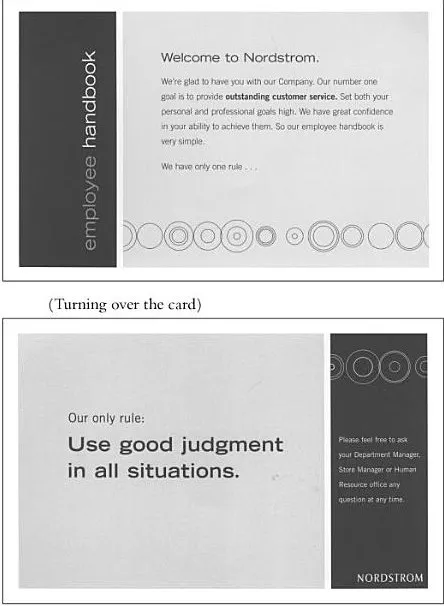
That unwavering trust empowers teams to do the right thing in the moment and learn from mistakes.
Pair guidelines with roleplay exercises to prepare your team for real-world scenarios where customers expect more than they’re entitled to. Practice responding to an abusive customer professionally yet firmly, for instance, or countering a refund request with a goodwill gesture.
5. Smooth automation for routine tasks
Workflow automation of repetitive, low-value tasks keeps customers informed and frees your team to focus on more complex or high-value interactions.
You certainly won’t be alone: 92% of sales and marketing professionals already use at least one automation tool in their workflow.
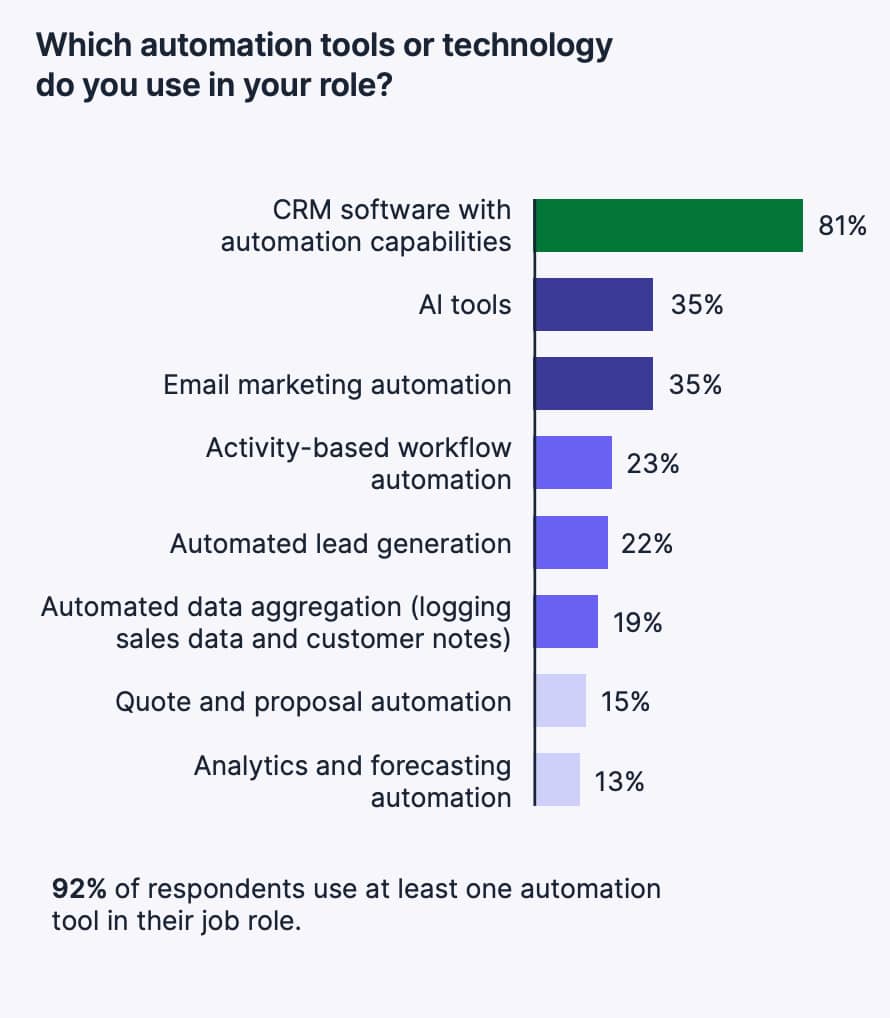
With the right tools, you can set up payment reminders, order notifications, post-purchase follow-ups and contract updates — all without adding to your team’s workload.
Regular, proactive communication means customers know what to expect, making them less likely to feel neglected or raise grievances.
For example, Shopify store owners can automatically send order status updates and back-in-stock alerts, keeping customers in the loop and reducing inbound queries. The feature, called Shopify Flow, looks like this:
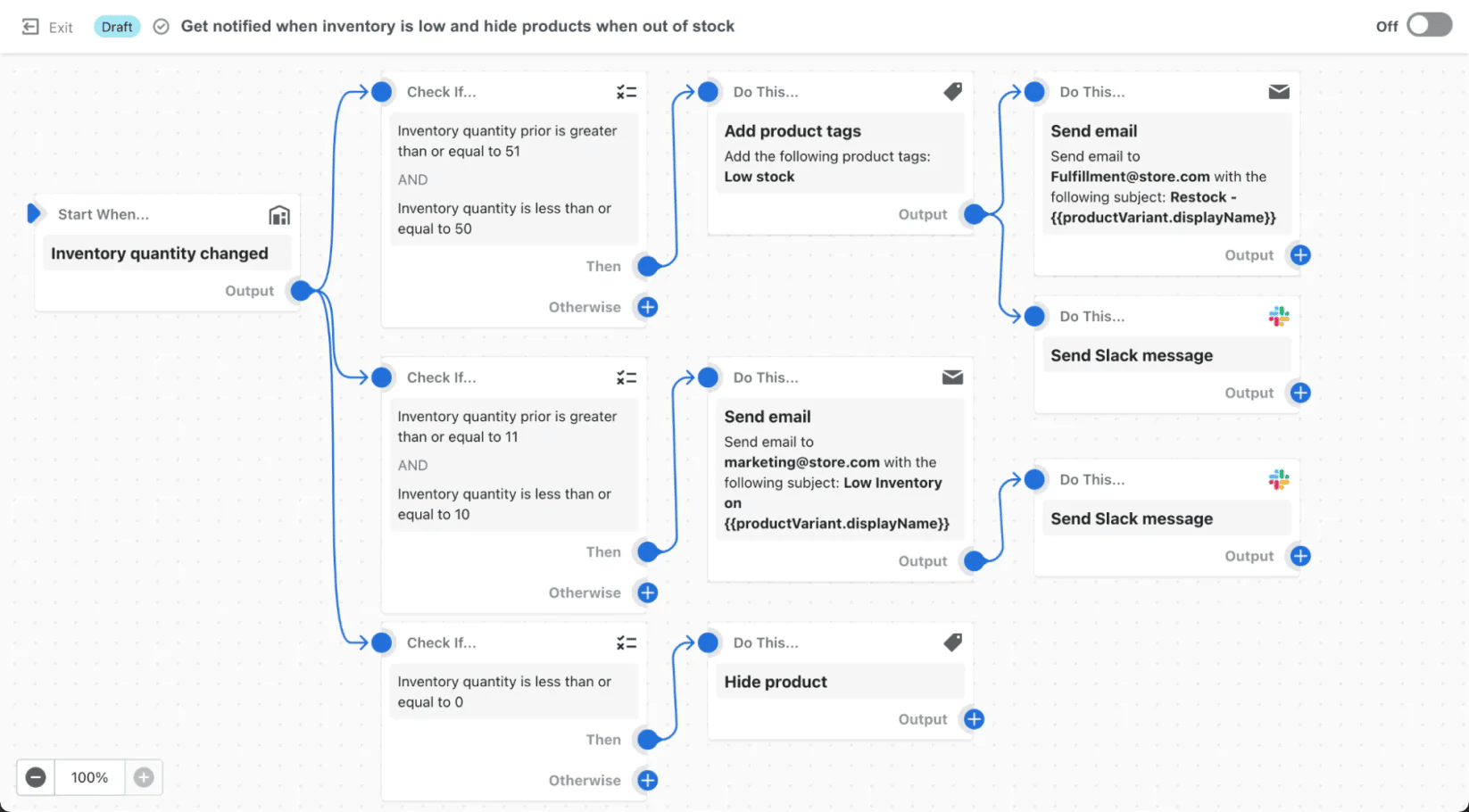
Pipedrive also allows you to automate follow-up emails, task assignments and status updates based on deal stage changes, so you never miss a customer touchpoint.
You get to keep buyers’ experiences consistent while creating time for more detailed interactions.
Crush your manual admin with this sales automation guide
6. A willingness to apologize
Teach your team how to apologize well – owning the mistake, explaining what happened and offering a fair fix. The trick is to match the remedy to the severity of the problem.
Create a guide that spells out when to give refunds, discounts or freebies so that staff respond the same way every time. This resource will prevent overpaying for minor issues while solving bigger problems.
For example, if a package is late, upgrade shipping for free. If a product doesn’t work, replace it and add a small bonus. Clear rules like these keep teams from making costly promises on the spot.
Track apology outcomes in Pipedrive to see what engages customers. Add custom fields to log the complaint type, resolution and CSAT score. You’ve got 16 custom field types at your disposal to make it easy to record how any customer feels.
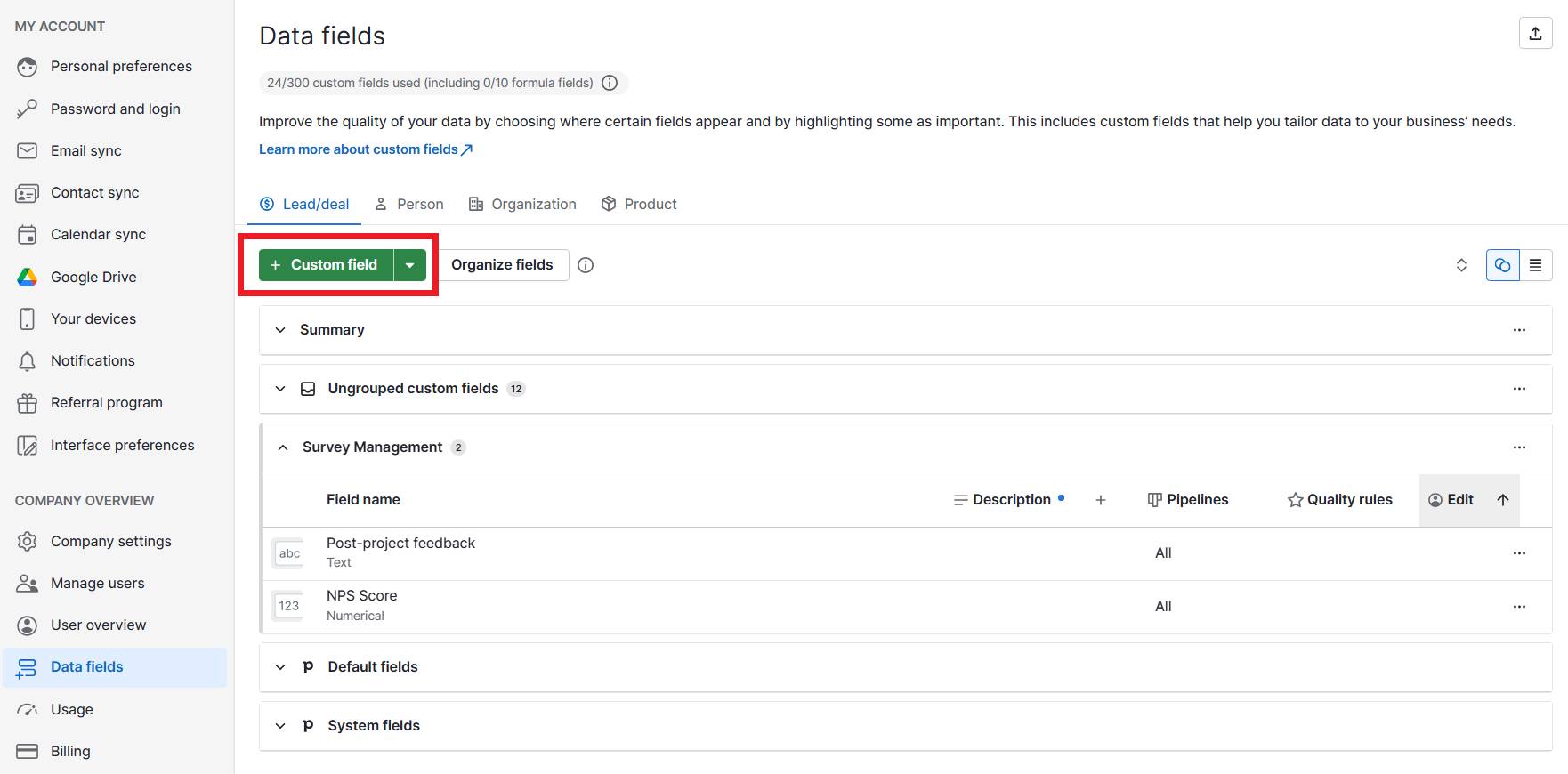
This precise customer data shows which apology methods work best over time and help your team stay consistent when similar issues arise.
Final thoughts
“The customer is always right” is a catchy phrase that no salesperson, support agent or business leader should take literally.
That said, putting customers at the center of your business inspires empathy and raises service standards. It protects relationships with loyal customers and keeps your business healthy by limiting unreasonable demands.
Give your team clear policies, the right tools and the confidence to act in the company’s best interests. That way, you can deliver outstanding customer experiences without letting the phrase become a burden.






